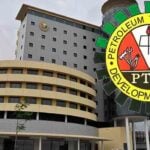NDDC Scholarship Environmental Science Past Questions And Answers [Free – Download]
The NNDC Scholarship is a prestigious opportunity for environmentally-conscious students to pursue their dreams of making a positive impact on the environment and society. Aspiring environmental scientists, conservationists, and advocates can excel in this scholarship with the right preparation. Our comprehensive Environmental Science Past Questions and Answers guide is designed to equip you with the knowledge and skills needed to secure this esteemed scholarship and create a greener and more sustainable future. The NNDC Scholarship is more than just financial assistance; it’s a recognition of your dedication to environmental conservation and your potential to become a change-maker. This scholarship empowers you to pursue higher education and contribute meaningfully to the field of Environmental Science.
Past questions and answers are a treasure trove of knowledge for any scholarship exam preparation. They provide insights into the exam’s structure, question patterns, and essential topics. By practicing with actual exam papers, you gain confidence, time-management skills, and the ability to apply theoretical knowledge to real-world scenarios.
With our Environmental Science Past Questions and Answers guide, you can deepen your understanding of environmental principles, expand your knowledge of ecological systems, and improve your analytical thinking. This preparation will set you apart as an outstanding candidate, ready to take on environmental challenges of the future.
What Makes Our NDDC Scholarship Past Questions Stand Out?
- Comprehensive Coverage: Our collection spans multiple years, ensuring that you’re well-prepared for any surprises the exam might throw your way.
- Detailed Answers: Each question is accompanied by a comprehensive answer guide, allowing you to learn from your mistakes and reinforce your knowledge.
- Exam-Relevant Content: Our team of experts has painstakingly compiled the most relevant topics and questions that align with the NDDC Scholarship exam syllabus.
About NDDC Scholarship Test Style and Format (Updated)
NDDC overseas scholarship test was conducted by Cinfores-Ltd, between 2010 and 2015. Since 2016, the tests are now conducted by MEIL (MARG Educational International Limited).
The test usually comprises of 2 sections –
1. General questions which everyone will have to sit, and
2. Discipline-based questions.
For example, candidates in Engineering and Science related disciplines could take a mix of science-based questions like maths, English, physics, and chemistry for part 1, then discipline-specific questions for part 2.
2016 and 2017 tests contained more discipline-specific tests and English language tests as general papers. The test usually lasts between 30 to 60 minutes.
Sample Past Questions for NDDC Scholarship Aptitude Test – for ENVIRONMENTAL SCIENCE candidates
1. What is the primary cause of the greenhouse effect?
a) Deforestation
b) Ozone depletion
c) Human activities
d) Solar radiation
Answer: c) Human activities
2. Which of the following is not an example of renewable energy?
a) Solar power
b) Wind power
c) Geothermal power
d) Fossil fuels
Answer: d) Fossil fuels
3. What is the main reason for the depletion of the ozone layer?
a) Increased carbon dioxide emissions
b) Industrial pollution
c) CFCs (Chlorofluorocarbons)
d) Acid rain
Answer: c) CFCs (Chlorofluorocarbons)
4. Which of the following is not an effect of global warming?
a) Melting of glaciers
b) Ocean acidification
c) Increased rainfall
d) More frequent and severe heatwaves
Answer: c) Increased rainfall
5. Which of the following is an example of point source pollution?
a) Agricultural runoff
b) Air pollution from cars
c) Oil spills
d) Plastic waste in the ocean
Answer: c) Oil spills
6. Wicch of the following is not a type of renewable energy technology?
a) Solar cells
b) Tidal power
c) Nuclear power
d) Biomass energy
Answer: c) Nuclear power
7. What is the primary source of indoor air pollution?
a) Carbon monoxide from stoves and heaters
b) Volatile organic compounds from cleaning products
c) Radon gas from the ground
d) Mold spores
Answer: a) Carbon monoxide from stoves and heaters
8. Which of the following is not a way to reduce carbon emissions?
a) Use of public transportation
b) Planting trees
c) Switching to electric vehicles
d) Building more coal-fired power plants
Answer: d) Building more coal-fired power plants
9. Which of the following is not an example of sustainable agriculture?
a) Crop rotation
b) Use of chemical fertilizers
c) Organic farming
d) Integrated pest management
Answer: b) Use of chemical fertilizers
10. Which of the following is a primary pollutant?
A) Nitrogen oxide
B) Ozone
C) Sulfur dioxide
D) Carbon monoxide
Answer: D
11. What is the main cause of the greenhouse effect?
A) Deforestation
B) Volcanic activity
C) Burning of fossil fuels
D) Overfishing
Answer: C
12. Which of the following is NOT a renewable energy source?
A) Solar power
B) Wind power
C) Coal
D) Hydroelectric power
Answer: C
13. Which of the following is the most common greenhouse gas?
A) Carbon dioxide
B) Methane
C) Nitrous oxide
D) Water vapor
Answer: D
14. What is the primary cause of acid rain?
A) Sulfur dioxide and nitrogen oxides
B) Carbon dioxide and methane
C) Carbon monoxide and particulate matter
D) Lead and mercury
Answer: A
15. What is the process of converting waste materials into new materials and objects?
A) Recycling
B) Composting
C) Incineration
D) Landfilling
Answer: A
16. Which of the following is a characteristic of a sustainable ecosystem?
A) High levels of pollution
B) versity loss
C) Efficient use of resources
D) Deforestation
Answer: C
17. Which of the following is an example of a non-point source of pollution?
A) Factory discharge pipe
B) Oil spill
C) Fertilizer runoff from a farm
D) Sewage treatment plant outflow
Answer: C
18. What is the process by which soil becomes contaminated with toxic substances?
A) Erosion
B) Leaching
C) Weathering
D) Deposition
Answer: B
19. Which of the following is NOT considered a renewable energy source?
a. Wind energy
b. Solar energy
c. Geothermal energy
d. Coal energy
Answer: d. Coal energy
20. What is the term used to describe the warming of the Eart h1s surface due to the presence of certain gases in the atmosphere?
a. Greenhouse effect
b. Ozone depletion
c. Acid rain
d. Deforestation
Answer: a. Greenhouse effect

Other Related Packs
PRODUCTION ENGINEERING.
PETROLEUM ENGINEERING
ELECTRICAL ENGINEERING
AGRICULTURAL ECONOMICS
CIVIL ENGINEERING
MECHANICAL ENGINEERING
ENVIRONMENTAL SCIENCE
MEDICAL SCIENCE
MANAGEMENT SCIENCE
EDUCATION AND HUMANITIES.
FISHERIES
GEOLOGY.
JOURNALISM
CHEMISTRY
CHEMICAL ENGINEERING.
BIOLOGY
COMPUTER ENGINEERING








